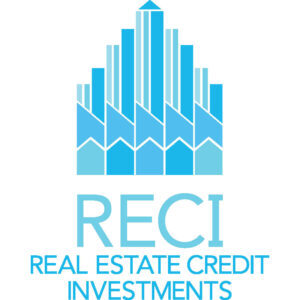Investor confidence in commercial real estate is starting to build again. With interest rates falling in the latter half of 2024 and transaction volumes stabilising, signs of asset-value growth are emerging in key sectors. However, recovery remains uneven, presenting both opportunities and risks for investors navigating an evolving market landscape.
The recent downturn was driven by cyclical factors such as rising interest rates and the reversal of compressed yields, further exacerbated by structural shifts like changing office demand. As the market moves towards a more sustained recovery, certain segments are poised to accelerate while others face a slower rebound. This divergence underscores the need for strategic investment decisions, as traditional office and retail assets struggle while alternative property types gain traction.
Some investors are shifting their focus towards emerging asset classes, leveraging demographic and technological trends to refine their portfolios. Others are identifying opportunities in undervalued traditional sectors. The combination of debt-refinancing stress and structural weakness in office properties continues to influence price discovery. Active management will be crucial in an environment where yield compression no longer serves as a tailwind, requiring investors to drive returns through careful selection and asset optimisation.
Geopolitical and economic uncertainties, along with escalating climate risks, add further complexity. The global economy remains off track from its net-zero goals, raising concerns about the frequency and severity of climate-related disasters. In 2024, extreme weather events underscored the financial implications of climate risk, making resilience and sustainability critical considerations for investors.
Following a two-year downturn, real estate transaction volumes and valuations stabilised in 2024, with lower interest rates expected to bridge the pricing gap between buyers and sellers in 2025. However, liquidity remains constrained, and investors are becoming more selective in their real estate exposures. The living sector, industrial assets, and properties linked to socioeconomic and technological trends continue to attract capital. High-profile transactions, such as Blackstone’s $16 billion acquisition of data centre operator AirTrunk, highlight the growing demand for assets at the intersection of commercial real estate and infrastructure.
Fundraising remains a challenge, with distributions from closed-end funds stalling due to subdued deal activity. Private credit’s rise and the outperformance of debt over equity funds have led many investors to favour debt strategies. Distress cycles comparable to the 2008 financial crisis have yet to materialise, though distress levels are increasing, creating opportunities for well-capitalised investors to acquire assets at discounted prices. Historically, funds launched in the aftermath of market corrections have delivered strong returns.
Office and retail remain difficult sectors, with structural shifts leading to significant value declines. However, as valuations adjust, some investors are re-entering these markets selectively. Despite pockets of outperformance, aggregate deal volumes for these property types are unlikely to return to historical norms in the near term.
As the market enters a new cycle, the focus is shifting towards asset selection and management. The traditional playbook for returns is evolving, requiring investors to adapt. Unlike in public equities, where broad market exposure is possible, real estate investing demands a careful balance between macro-level allocation and granular asset selection. With yield compression no longer a key driver of returns, asset-level performance is becoming a dominant factor.
Attribution analysis underscores the shifting dynamics of performance drivers. Historical data from MSCI/PREA highlights how selection has historically driven a significant portion of fund performance deviations. While sector allocation shaped outcomes in the past decade, particularly amid the retail downturn and the remote-work shift, the pendulum is swinging back towards selection. In a higher-rate environment, the fundamental attributes of individual assets are now crucial to investment success.
A growing concern for investors is the looming wave of maturing commercial real estate loans. Higher interest rates and ongoing price declines have placed significant pressure on refinancing prospects. In the U.S., an estimated $500 billion in commercial-property loans will mature in 2025, with approximately 14% at risk of being underwater. The office sector faces the greatest refinancing challenges, with nearly 30% of maturing office loans exceeding asset values. Apartments also face vulnerabilities, particularly for loans originated in 2022 at peak valuations. European property markets have also experienced significant corrections, putting further strain on loan obligations.
Climate risk remains an increasingly critical factor in real estate investment. Extreme weather events are escalating, driving up insurance costs and disrupting asset values. Despite this, pricing does not yet fully reflect these risks. Analysis of multifamily property transactions in high-risk U.S. regions shows little differentiation in yields between high- and low-risk assets. As climate-related costs rise, pricing adjustments will likely follow, making it essential for investors to proactively factor climate risk into portfolio strategies.
The rise of AI is reshaping real estate, driving unprecedented demand for data centres. In 2024, some of the largest property deals revolved around AI-related infrastructure, including Blackstone’s acquisition of AirTrunk and GIC’s $15 billion joint venture with Equinix. AI-driven data centres differ from traditional cloud computing facilities, requiring higher rack densities and significant capital investment. The rapid evolution of this asset class has drawn in new real estate investors alongside traditional infrastructure players, creating a diverse investment landscape. However, data centre investments come with unique challenges, including specialised operational requirements and limited market transparency, favouring experienced investors with established portfolios.
As commercial real estate transitions into its next phase, strategic asset selection and active management will be paramount. Investors must navigate an evolving landscape shaped by shifting economic conditions, structural transformations, and emerging risks. Those who adapt effectively will be well-positioned to capitalise on the opportunities that lie ahead.
Real Estate Credit Investments Limited (LON:RECI) is a closed-end investment company that specialises in European real estate credit markets. Their primary objective is to provide attractive and stable returns to their shareholders, mainly in the form of quarterly dividends, by exposing them to a diversified portfolio of real estate credit investments.



